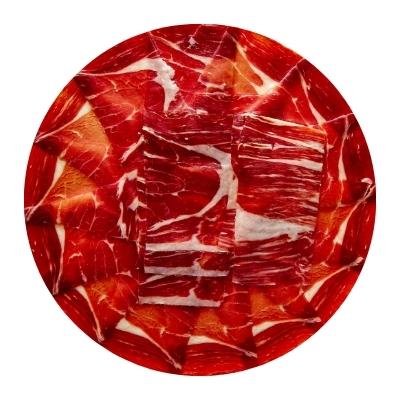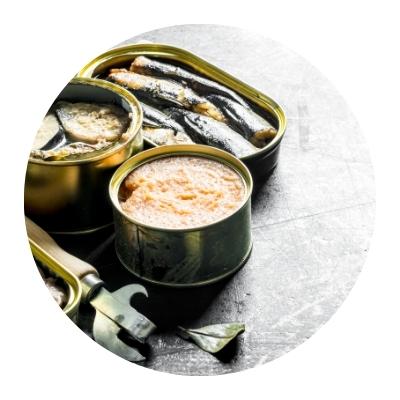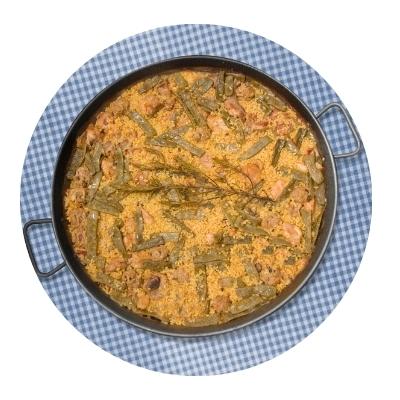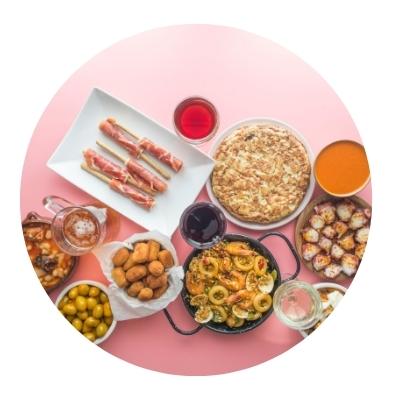Visiting Juan Pedro Domecq (Producer of pata negra ham)

Five generations ago, the Domecq family with roots in France settled in Western Andalusia around 1730. The viticulture and sherry production that had been cultivated until then was followed in the 1970s by animal husbandry, and in particular that of a single breed of genetically pure Ibérico pigs, "lampiño-marmellado". The ultimate in small-scale Ibérico raw ham is an exclusive treat served by Michelin-starred chefs worldwide.
Question: What makes this breed of pig, 100 % ibérico and lampiño-marmellado so special?
Answer: Juan Pedro Domecq, founder of the ibérico pig farm, was a recognised expert in the field of genetics and virtually rediscovered this breed, which we breed almost exclusively. It has excellent, unique qualities for the production of meat products, ranging from Jamón raw ham to Paleta fore-shank and sausages. Like this breed of pig, it takes in and stores in its fat the health-promoting polyunsaturated omega-3 fatty acids that come from fattening with the fruits of the holm and cork oaks of the pastures. Production is lower, not only do the pigs not grow very large, but their reproduction rate is also lower than other ibérico breeds. This breed is not practical for large production and mass production. We, who have a small, limited production, have found the ideal one with this breed. The work behind it is the same, except that the jamón shank we produce at Juan Pedro Domecq usually weighs around seven kilos, not 8, 8.5 and more, as is the case with other jamón ibérico producers. Our focus is simply the quality that you can see with the naked eye, namely how the layers of fat and inclusions are marbled in the muscle tissue. That is unique.
Question: How many pigs do you breed each year, and what about the important "Montanera" fattening phase, which usually ends in February-March?
Answer: We have 3000 pigs every year, the "Montanera" acorn fattening depends on the ripeness of the acorns and varies by a few weeks every year. Our animals live in total freedom for at least 18 of their 22 months until slaughter. The number of pigs depends on our philosophy, less, but absolute top quality. And on the size of our fincas and estates, so that each animal has more than enough pasture. In this way, we create an exclusive product and build on an extremely loyal customer base. Our quality is always the same, year after year, we have only top quality Jamónes. Because what often happens is that people think they can maintain the quality with more animals and more production. But that is not so, it is a fallacy.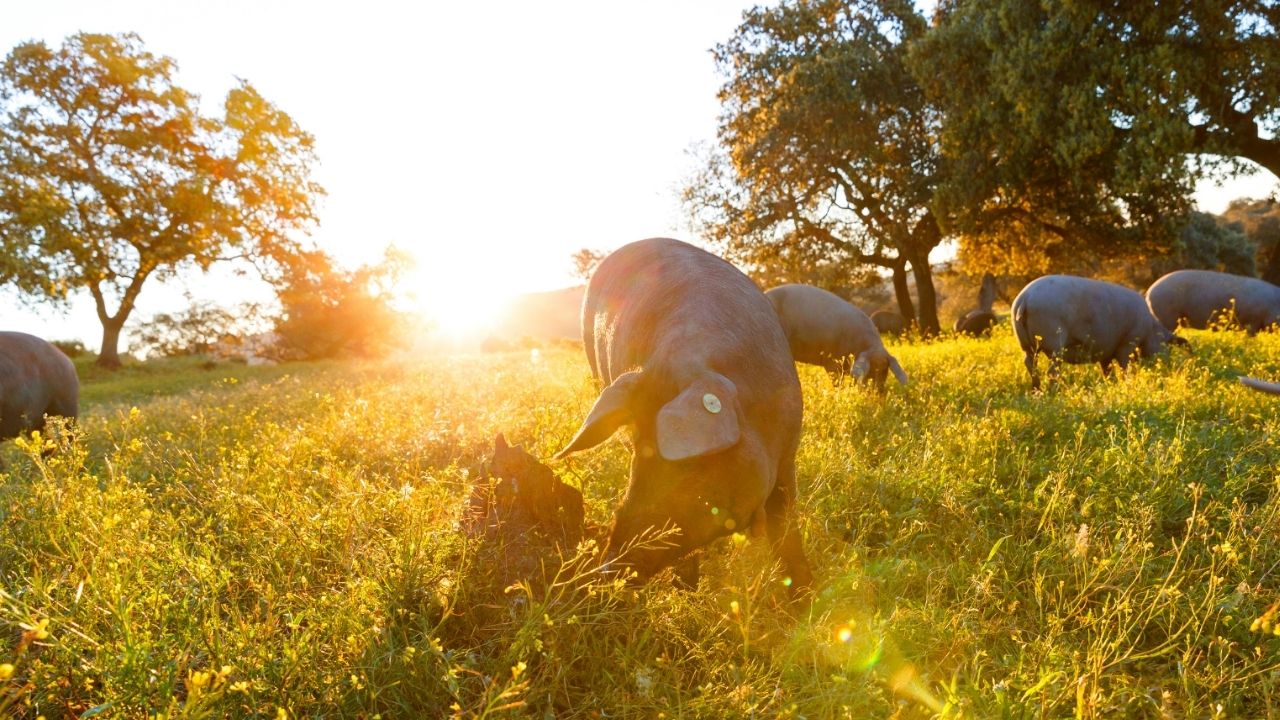
Question: Over the difficult years of the Covid 19 pandemic, have you been able to maintain production, and how has the decline been felt in the restaurant and hotel industry?
Answer: We kept production at the same level, which was a risk, but it paid off. Also because our hams have at least 42 months to mature. If we had reduced, we would be short of our stock now.
Question: Do you have different quality levels and maturation times for your hams?
Answer: No, all our jamones are matured for at least 42 months, which is also part of our company philosophy. One product, but of the absolute top class. Some pieces need a few months more, for example because of the size, but the final product must always have the same unique qualities.
Question: Assuming that Ibérico hams are largely organic in their production, from the breeding and rearing of pigs in the "Dehesa" oak groves, an extremely sustainable form of breeding and fattening that also serves to preserve the cultivated landscape, as well as in the maturing process, do you have an "organic" certificate at Juan Pedro Domecq?
Answer: This is a long process, and I think still for a limited clientele. What would be feasible is to convert part of the production to purely "organic". Let's say 80-90 per cent conventional, and one tranche organic. Even if we don't have a label, our production is probably far more sustainable and ecological than most others. And we're not even talking about the high quality of life our animals have in their oak groves. Perhaps this is only surpassed by Kobe cattle in Japan.
Question: What are your primary customers, buyers and how important is the international market for Juan Pedro Domecq? Where do the 6,000 to a maximum of 7,200 jamones and just as many paletas go every year?
Answer: I can only give you rough figures, but almost 70 percent are destined for export, which is also our focus, and about 30 go to the Spanish market. And here, gastronomy is almost more important for us than sales through exclusive gourmet shops that also focus on wines or top cheeses. This is true for Spain, and also internationally, in direct sales and online trade, as well as exclusively for Colono in Vienna. And sales are going very well. On the other hand, we have top chefs in their restaurants, like Casa Mariscal in Madrid, and Michelin-starred chefs, like Sergio "Nacho" Manzano (note A'Barra restaurant), who has two stars in Spain. And with his brother Javier, he has five Spanish restaurants in London, where our Ibérico ham is his "flagship" product from Spain.
Question: I am a fan of the paletas, the fore hams, but that is a matter of taste. But you also have an ibérico lomo at just under 300 grams, a delicacy, salchichón, morcilla and chorizo, clearly all 100 per cent ibérico. What happens to the other parts of the pigs? Fresh pieces, they go to the gastronomy, I suppose?
Answer: Yes, all these parts of the pig go directly to restaurants, through a business partner who handles the distribution. Also to England, France and other countries. Since slaughtering only takes place once a year, these pieces are shipped frozen, according to the customers' pre-order. We have also thought of offering the shipment of fresh meat in our online shop, as a test to see how it goes down with our customers. But we know there is a big demand for these products. Unfortunately, we have taken the sobrasada out of our range; the health-promoting fats of the Ibérico pigs coagulate at a much lower temperature.
Question: The rural exodus, a big problem in Spain, which causes political debates and protests among the rural population. I would be interested to know what impact your farm has on the economy of the community and region. And how many employees does Juan Pedro Domecq have? Of course, Jabugo and the entire surrounding area live from pig breeding and Jamón Ibérico production.
Answer: As you rightly say, almost everyone here lives from ibérico ham and breeding. We as a small business, we have 20-25 employees, depending on the season. But everyone here in Jabugo has a job in ham. Then there is rural tourism, we have an incredible number of villages here, beautiful and full of history. Like Almonaster la Real, with the old mosque, and many more. Surrounded by forests and oak groves, around the gentle, almost evergreen hills of Aracena.
Question: In your farm and in Jabugo, how did you follow the polemical debate earlier this year that the Minister of Consumption Alberto Garzón triggered with a harsh criticism of extensive, Spanish pig and meat production in the British Guardian and that dominated the media for weeks?
Answer: We didn't feel addressed, and didn't feel put in that bag. Our form of pig farming is just diametrically the other than industrial mass production. But we thought of sharing a post through our social media channels. But then refrained from doing so, so as not to get involved in the debate either. Why should we? Our impact on the environment and surroundings is the stark contrast to meat factories. It was also important to us that the public does not associate our product with Garzon's words.
Question: The breeding of Ibérico pigs also serves to preserve the stone and cork oak groves in western Andalusia and Extremadura, which have grown and been tended over centuries. There is a probably bacterial plague affecting the oaks, called "La Seca", the drought that kills trees en masse. What about the health of your grazing lands, also in the context of climate change? So I suppose the quantity and quality of the acorns of the trees, varies year by year.
Answer: Fortunately, we have been spared the "Seca" here in our enclave. And the disease is spreading rapidly in Extremadura. With devastating consequences, the oak forests and groves die within two years. We are extremely vigilant about how the "Seca" spreads. Since our production is limited and small, our lands have always provided more than enough food for our animals. To give an illustrative example, the norm for "Ibérico" ham is that each pig must have two hectares of pasture. We offer our animals twice that area. Our animals are the most important thing for us. It is impossible for us not to have enough acorns for our animals in one year in the "Montanera". But there are always better and worse years, depending on the amount of rainfall and heat waves. But we have controlled this variability thanks to our team of veterinarians, because: That our pigs never lack for anything is the most important thing. This is also a cornerstone of our company philosophy.
Question: What about your sales in the Far East, and in China. Where Spanish cured ham, and primarily ibérico, is becoming more and more popular among the growing middle class?
Answer: China and other countries in the region are experiencing a surge in demand for top quality products like ours. Our gateway to China has been to pay close attention to where we are present, and that is through gourmet shops and online shops, and among them the best. That is our strength, and we have to be present there. We are also growing strongly in Singapore, Japan and Thailand. Asia, not only China, are very important markets.
Question: The Domecq family, and Juan Padre Domecq senior, was also famous for breeding the best Iberian fighting bulls in the world because of his expertise in genetics. Now putting aside what I consider to be the mostly unattractive spectacle in the arena, it is a single species that would become extinct without the controversial "tradition" ... Are the breeding farms connected?
Answer: Our two farms are completely separate, even though they are located on the same lands, the same fincas. The experience in breeding and especially in keeping naturally benefits both, our Ibérico pigs and the fighting bulls. We also have wines through family connections, but that is also a completely different area from an entrepreneurial point of view.
Question: Finally, a paradigm question: Ibérico Jamón sliced by machine?
Answer: You can cut the ham pieces well with a machine, but for the front shank, the "paleta", you need experience and your hand. Of course, one thing is certain: no machine can hold a candle to a freshly and professionally hand-cut Ibérico ham. But cutting ham has to be learned, so for all those who don't have the confidence to do it, the machine is a good alternative. Another ideal option is to buy the jamón or paleta, which is hand-cut by our professionals, sliced at 14 degrees and vacuum-packed, not losing a milligram of fat. And when it reaches the customer in this top condition, unpack it, let it come to room temperature, and enjoy!
Question: To the question "Paleta" or "Jamón", what advice would you give to ibérico fans?
Answer: In principle, they are very similar products, differing primarily in size; a paleta is about three to four kilos, a jamón over seven. In addition, the paleta has a little more fat content, but also a little more salt, because of the size and the length of the maturing process. But in the end, it's a matter of taste. Here in our region, in Catalonia and the Basque Country, the paleta is more popular, in central Spain and Madrid the jamón. In addition, a small paleta is more practical for everyday use and for small households. It can be eaten in two to three weeks. For a whole ham, you need five eaters, or you share it out among neighbours and relatives.
Biography: Teresa and Isabel Domecq Morenes are the fifth generation of their family to run the Ibérico pig farm. Their animals live for at least 18 months in the holm and cork oak groves in the far west of the Andalusian province of Seville, on the border with Huelva and the Sierra de Aracena. Besides the vegetation as a source of food for the animals, the dry climate, which is cold in winter, is also ideal for maturing the raw hams. The interview was given by Teresa, Isabel and the person responsible for communication, Miriam Rivas.
SHARE:
